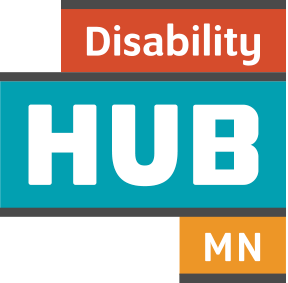Transition to adulthood topics:
Transition to adulthood
Programs and services
Find the programs and services that can help your child transition into the next stage of life.
-
To qualify for special education, your child will need a special education evaluation. This evaluation is done through the school system and with your written consent. Know what to expect during an evaluation for special education from the Center for Parent Information and Resources. After the evaluation, your child's team will review the services, accommodations, technology and other supports that can help your child be successful at school. These supports will be detailed in your child's Individual Education Program, or IEP.
Also consider after-school and out-of-school programs from the Minnesota Department of Education.
-
If your child has an IEP, the team will start transition planning by the time your child turns 14 or starts 9th grade. It's never too early to start planning! Think about what your child loves to do, your child's strengths and skills, and what your child wants for the future. See FAQs about special education transition planning (PDF) from the Minnesota Disability Law Center.
-
Your child may be able to complete driver training through the high school or a local driving school. If your child needs adaptations or additional supports, check out driver assessment and training options through Allina Health or Adaptive Experts.
-
Adapting your home and/or vehicle for your child's changing needs can remove barriers and help your child feel included and able to participate in everyday life.
If your child is eligible for a home and community-based waiver, ask your local county agency or tribe about the process to make home or vehicle modifications. Find phone numbers in this tribal and county directory. You'll need to follow an assessment, authorization and installation process for the modifications to be reimbursed through the waiver.
If your child isn't eligible for a home and community-based waiver, consider other ways to get help with home and/or vehicle modifications, such as grants and resources for accessible vans and help building wheelchair ramps.
If you adopted your child with special needs, the Adoption Assistance Program may reimburse certain modification costs. Check out reimbursement instructions for home modification and vehicle modification.
-
Health coverage is an important element in getting the care your family needs. Depending on your situation, you might have access to employer-sponsored coverage, Medical Assistance or MinnesotaCare. Or, you might choose to purchase your own health insurance through MNsure. Even if you earn too much money to qualify for Medical Assistance, your child might qualify for MA-TEFRA.
Learn more about your health coverage options under Your Options.
-
For long-term services and supports — such as personal care assistance or waiver services — request a MnCHOICES assessment (PDF) from your county agency or tribe. Find phone numbers in this tribal and county directory.
Also talk to your child's health care provider about your child's medical needs, such as skilled nursing visits in your home, physical therapy, occupational therapy or speech therapy. Check with your insurance provider about what's covered and any steps you need to take to ensure coverage.
-
Get the basics on benefits for children with disabilities (PDF) from the Social Security Administration, and use the child disability starter kit to see what to expect when applying. Then, see how to apply for disability benefits for your child.
To apply for cash, food, child care or emergency assistance, use MNBenefits. Your application will be sent to your county agency or tribe for review. In some cases, you may be contacted for an interview. If you need immediate help, contact your county agency or tribe. Find phone numbers in this tribal and county directory.
-
The Minnesota Department of Human Services offers many services and programs for children with mental health needs. Depending on the services you're interested in, you might start with your child's health care provider, your health care plan, or your local county agency or tribe. Find phone numbers in this tribal and county directory.
-
If you have low income, the SNAP program can help you stretch your budget to get the food you need for nutritious and well-balanced meals. Get the details here:
-
A health care home is a primary care clinic or provider certified by the Minnesota Department of Health to coordinate care among a primary care team, specialists and community partners. A health care home supports team-based, coordinated, patient-centered care.
